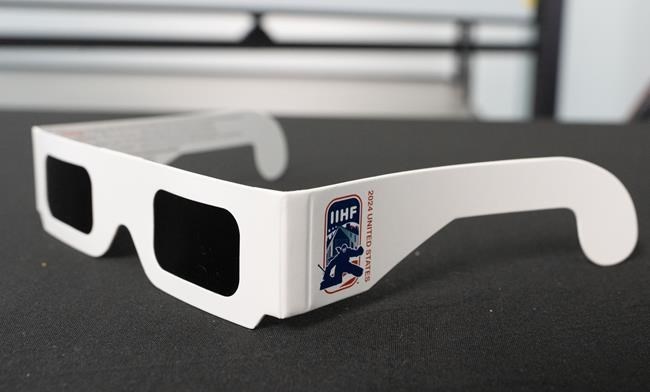UTICA, N.Y. — The Canadian women's hockey team was prepared for a wrinkle in their world championship schedule from Monday's solar eclipse.
Canada was to face defending champion United States on Monday night in Utica, N.Y., which was under the path of the solar eclipse's shadow, although not enough for its citizens to see the moon completely block the sun.
But a "deep partial", or magnitude of 99.4 per cent, was expected by 3:24 p.m. ET not long before the Canadian team was scheduled to head to the Adirondack Center.
All 10 participating countries were staying at a hotel and casino 40 kilometres from the arena.
The nearby Adirondack Mountains to the northeast were touted as a prime viewing area to see a total eclipse. Local authorities warned of heavy traffic in the area as people sought out premiere vantage points.
"We're trying to look at what it potentially may do for our schedule," Canadian head coach Troy Ryan said. "We're anticipating possibly a longer drive to the rink.
"We'll be busy in a meeting generally when it's supposed to be happening and then the travel is just trying to dodge the traffic to get here on time."
The Canadian team budgeted an extra half-hour of travel time to get to the Adirondack Bank Center.
Protective eclipse glasses or viewers were in high demand in Utica, and sold out in some big-box stores by Monday.
The International Ice Hockey Federation provided protective viewers stamped with the IIHF logo, however.
Canada's players were preoccupied with a big game against the U.S., and not with a rare celestial phenomenon in North America.
"No, we're not. We're focused on our game," Canadian forward Kristin O'Neill said.
"We're just talking about how much traffic is going to be coming over the border for our families," added her teammate Jamie Lee Rattray. "We want to make sure everyone gets here safe."
Forward Danielle Serdachny said the eclipse wasn't a "huge topic of discussion" among teammates.
"It's a pretty cool opportunity for that to be happening here," she said.
Monday's forecast was for part sun and cloud.
This report by The Canadian Press was first published April 8, 2024.
Donna Spencer, The Canadian Press


